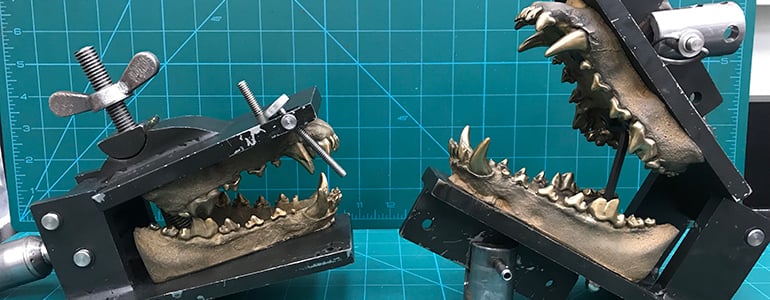Safety in Dog Toys

17 Sep 2019
Testing When There's No Regulation
Humans and dogs have been inseparable since the Stone Age. Our canine friends have followed us from our early huts to houses, castles, apartments and condos. Wherever we go we take them with us, but not, it seems, safely.
Unlike products meant for human consumption, there are no safety regulations on pet toys and accessories. Not only is there no minimum standard for what is allowed to be put on the market, marketers can make any claims they like about a product. "Indestructible" for example, has no regulatory definition.
Unfortunately for pet owners, the lack of safety testing on dog toys is not a well-known phenomenon. Owners usually only find out about the risks when they're rushing their beloved pet to the veterinarian's clinic. That "indestructible" chew toy can fall apart, be swallowed and cause a lot of stress and damage to a dog's intestines – with no consequences to the manufacturer, because the wording on the packaging is as cosmetic as the choice of font.
The safety free-for-all doesn't end with pet toys. While a human seatbelt must pass a gauntlet of regulations and testing before it makes it to market, pet safety belts are unregulated. Like airbags, safety belts only work if they catch with exact timing and the right geometry, otherwise they can cause more damage than the crash. Unfortunately, there is no easy way for a consumer to differentiate the helpful from the harmful.
Pet safety is a cause close to the heart, and it won't surprise you to learn many owners are banding together to lobby for regulation and accountability. At the same time, they're working to increase consumer awareness, and to direct them to quality products by running studies and offering their own certifications for pet accessories.
The moral and marketing advantages to testing pet products is clear, but finding a lab capable of running these tests can pose a challenge. Where can you get safety testing done for a product that has no regulatory requirement for it?
At Intertek, we've never shied away from unusual requests. The Product Assurance team has built fixtures and tools to mimic a dog's chewing and a dog's tearing ("bite and pull") actions, so they could test a product to fatigue and failure. These are the most common tests for a dog toy, but custom tests can be designed, with fixtures and tools built upon request.

Keith Rhoades,
Sr. Manager, Research, Engineering, & Innovation, Product Assurance
Health, Environmental & Regulatory Services (HERS)
Today's expert blogger, Keith Rhoades, comes from a background of Mechanical Engineering and Industrial Design. Typically, you'll find Keith in the Human Factors Research Lab designing bespoke assessment methods and fixtures for a variety of clients within the consumer product space. If he's not there, Keith may be found traveling the world to client offices training and promoting product safety through design and data driven examples.